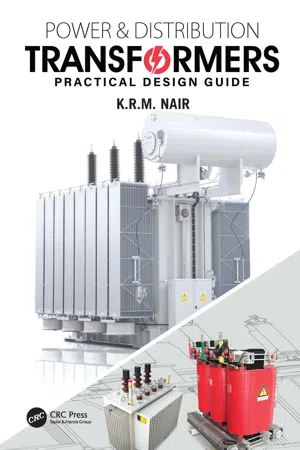
Power and Distribution Transformers
Practical Design Guide
K.R.M. Nair
- 473 páginas
- English
- ePUB (apto para móviles)
- Disponible en iOS y Android
Power and Distribution Transformers
Practical Design Guide
K.R.M. Nair
Información del libro
This book is based on the author's 50+ years experience in the power and distribution transformer industry. The first few chapters of the book provide a step-by-step procedures of transformer design. Engineers without prior knowledge or exposure to design can follow the procedures and calculation methods to acquire reasonable proficiency necessary to designing a transformer.
Although the transformer is a mature product, engineers working in the industry need to understand its fundamentals oand design to enable them to offer products to meet the challenging demands of the power system and the customer. This book can function as a useful guide for practicing engineers to undertake new designs, cost optimization, design automation etc., without the need for external help or consultancy.
The book extensively covers the design processes with necessary data and calculations from a wide variety of transformers, including dry-type cast resin transformers, amorphous core transformers, earthing transformers, rectifier transformers, auto transformers, transformers for explosive atmospheres, and solid-state transformers. The other subjects covered include, carbon footprint salculation of transformers, condition monitoring of transformers and design optimization techniques.
In addition to being useful for the transformer industry, this book can serve as a reference for power utility engineers, consultants, research scholars, and teaching faculty at universities.
Preguntas frecuentes
Información
1 Transformer Design
1.1 Introduction
1.2 Definition of Transformer
A static piece of apparatus with two or more windings which by electromagnetic induction transform a system of alternating voltage and current into another system of voltage and current, usually of different values and at the same frequency for the purpose of transmitting electric power.
A static electric device consisting of two or more windings with or without a magnetic core for producing mutual coupling between electric circuits.
1.3 Design Objectives
- Design the transformer by selecting the most suitable materials to reduce the cost of the product
- Optimize the lifetime owning cost of the product
- Design environmental-friendly and safe product
- Develop product suitable to meet the evolving requirement of the grid and customer
- Adapt new technologies and offer continuous improvements